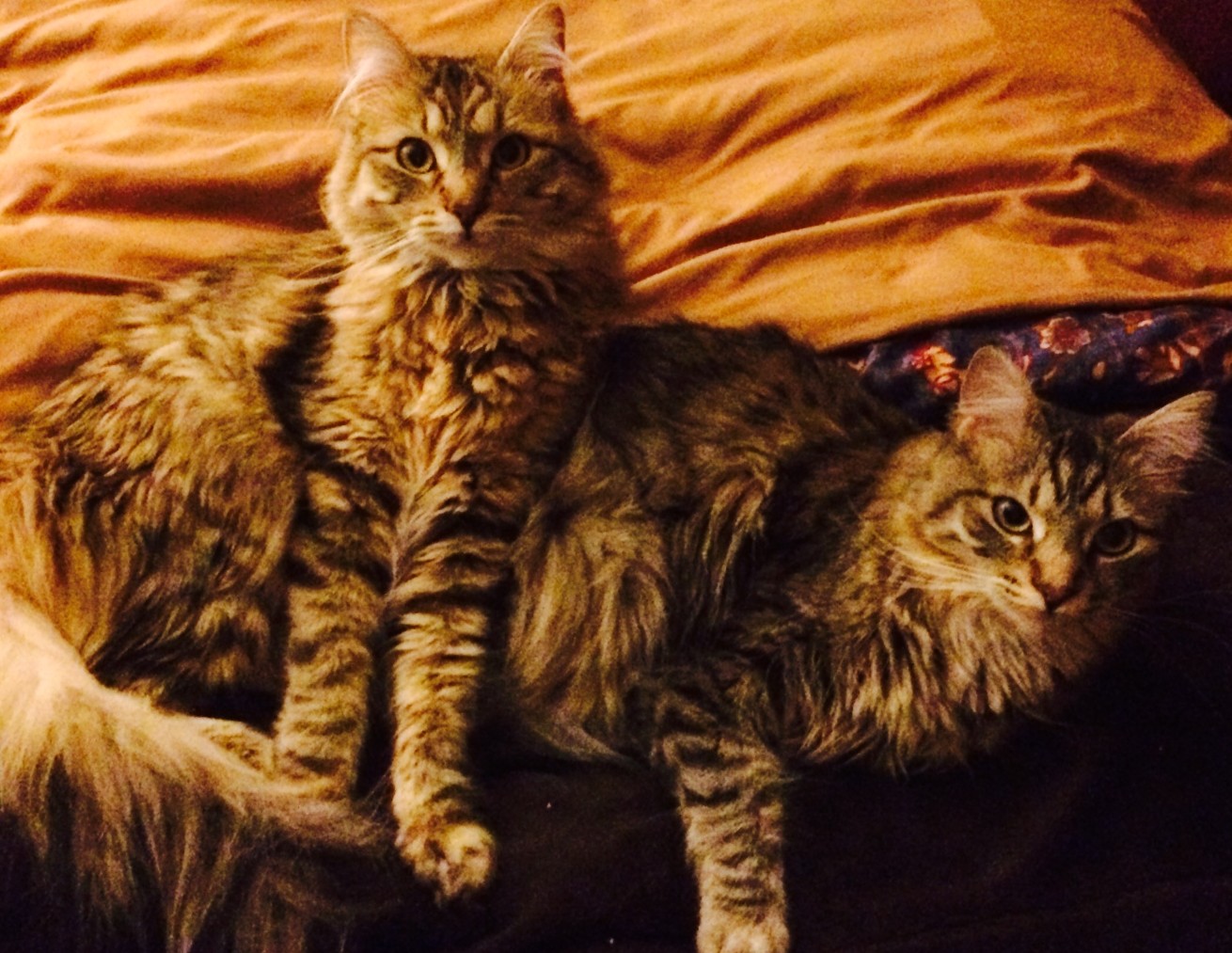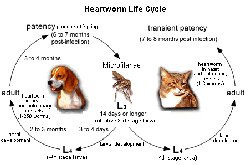How to Keep Your Cat Indoors and Happy
Cats are naturally curious and active creatures, and with so many different personalities among the feline population, they can be incredible and fun companions. Depending on where you live, you may want to keep your cat indoors or let it go outdoors. Many people choose to keep their cats indoors because it is definitely much safer for the cat, and for the wildlife in the area. Dangers to cats that live outdoors include getting picked up by a humane shelter or another person, getting run over by cars, getting in fights with other animals, getting killed by dogs or coyotes, being chased away by other animals, getting lost, being exposed to outside temperatures, climate changes, and bad weather conditions, and contracting illnesses among other things, including accidental pregnancy if the cat is not fixed, which, I hope you already know is absolutely necessary in this day and age. In any case, while having an indoor cat requires a bit more responsibility, you’ll soon learn that sharing your life with a feline is simply… awesome.
However, it is not always easy to condition a cat that has had a taste of the wild to live indoors.
 Indoor and outdoor cats are practically two different species. Indoor cats are much more dependent on you for food and water, and you should always provide and keep clean areas for them to use the bathroom and sleep. Outdoor cats, on the other hand, are much more independent as they adapt to their surroundings. While they still rely on you for food, water, and shelter, they also know how to hunt their own prey and find alternative places to sleep if it so pleases them. The world is their litter box, so you don’t have the responsibility of keeping one clean for them (unless, of course, they choose to use your garden for this). But, how to keep your cat indoors once it’s used to being outside?
Indoor and outdoor cats are practically two different species. Indoor cats are much more dependent on you for food and water, and you should always provide and keep clean areas for them to use the bathroom and sleep. Outdoor cats, on the other hand, are much more independent as they adapt to their surroundings. While they still rely on you for food, water, and shelter, they also know how to hunt their own prey and find alternative places to sleep if it so pleases them. The world is their litter box, so you don’t have the responsibility of keeping one clean for them (unless, of course, they choose to use your garden for this). But, how to keep your cat indoors once it’s used to being outside?
Now, you may wonder, are indoor cats happy? The answer to this question is yes, but you have to consider different situations. A cat that has never lived outside, or is very young, will adapt to indoor life just fine. As long as they have food, water, a clean litter box, and their own special areas to sleep and play, they are easy to keep happy and typically won’t attempt to leave the house as they are content in their own space.
When you bring an outdoor cat inside after they have already lived outside, you may face a bit of trouble. Outdoor felines already have a system down, and are accustomed to going wherever they please. Now that they are confined to a smaller living space, they may, at first, be hostile and upset towards their environment. This is why helping them adapt to their new area is vital.
Establish a feeding time, keep fresh water, and make sure you keep the litter box in the same place and out of the way of human traffic, at least until they get used to their new home. Allow them to explore and recognize the scent of your house, and let them find corners for them to snuggle into and claim as their own. Make sure you use cat condos or shelves on the walls where they can climb and observe their new world.
For a few days after he or she has been brought into your home, keep an eye on them and note their behaviors. Do they seem distressed? Distract them with play toys and let them continue exploring their space. Getting them accustomed to all of the new sights and smells will help them to adapt better.
The thing that you must remember when thinking about how to keep your cat happy indoors is that every feline is different. Some cats will be just fine in their new environment right away, while others will take a little longer. Either way, cats can be happy indoors as long as you maintain and keep their living areas clean, and show them the nurturing love and care that they need and deserve to survive. Don’t make the mistake of thinking that once you own a cat you should just “let it be” because they are so independent. Cats need stimulus and attention too. Provide them with scratching posts and toys, play with them every day, and any outdoor cat will soon know that it’s always a good thing to be inside.
How to Train an Older Dog
When you get a new dog, after the excitement of welcoming the new member of the family, whether it’s a puppy or an older dog, the first question that comes into your mind is “how do I train him or him?” (I’m gonna talk about “him” for the sake of readability, not a special preference, ok?)
Of course, if it’s a puppy, it’s very easy to teach him basic obedience and house training. But, how to train an older dog? You have always heard “you can’t teach an old dog new tricks”, but nothing can be further from the truth. The way to go about it is to approach it as you would when training the dog of any age. Most importantly is building a bond with your new pet. It’s a crucial step to be able to train him successfully. You have to develop a caring and loving relationship with him to win his trust. Talk to him, go for walks (never underestimate the importance of walking your dog, even if you have it big yard for him to play in), spend quality time together, have play sessions, etc. It’s very important to develop trust, but there also has to be mutual respect between you and your pet. It takes time to develop trust, and respect will come from defining boundaries and treating any breach with firmness and fairness. You have to develop limitations, in order to develop respect, and you need respect to develop a bond.
 Once you have built a bond with your dog, training him or teaching him anything at any age, should be doable, but more so when training an adult dog will not always be as easy as training a puppy. House training an older dog will sometimes take more time and will require a lot more love and patience on your part, especially if he was not house trained before, but it can definitely be done.
Once you have built a bond with your dog, training him or teaching him anything at any age, should be doable, but more so when training an adult dog will not always be as easy as training a puppy. House training an older dog will sometimes take more time and will require a lot more love and patience on your part, especially if he was not house trained before, but it can definitely be done.
If your dog is urinating and defecating in inappropriate places, first thing to do is rule out any medical problem. It’s always a good idea to have your new dog checked by a vet when you first adopt him. Sometimes even a diet change might do the trick. Being an adult dog, they might have a problem like incontinence, which is treatable with medications. Have a good talk with your vet about all the possible medical reasons for the behavior.
You must keep your dog in a consistent feeding schedule and remove the food one he’s done. You must also take him outside on a consistent and frequent schedule. You should take him out first thing in the morning, last thing at night, and before being confined or left alone. A fully house trained older dog should eliminate outside at least four times a day. At the beginning, know where your dog is at all times. Watch for signs that he needs to eliminate, learn to read his body language. If you see him pacing, whining, circling, or acting restless, it might mean it’s time for a potty break. If you don’t have a chance to watch him constantly, you might need to use a crate or put him in a small room with a closed baby gate or door. Take him out every few hours, and as he learns, you’ll be able to give him more liberty.
Whenever you take him out and he goes where you want him to go, praise him abundantly and even carry a tasty treat as his reward for going where he should.
What to do if you catch your dog in the act? Clap loudly or make a loud noise to startle him, but not enough to scare him. Avoid yelling or punishing him because if you do, he might decide that eliminating in your present is a bad idea, and find another place to do it. When you startle him, the dog should stop in midstream, then grab him and take him outside immediately. As you rush, do it gently and encourage him to follow you the whole way. When he finishes eliminating outside, reward him with praise and maybe a treat or two. If you find that he had an accident after the fact. Do not do anything to him since he won’t be able to connect the punishment would something he did hours or even minutes ago.
Try to control your reaction to your dog’s accidents. If you yell angrily and punish him you will jeopardize any bonding that you might have accomplished. Pet urine can be taken care of with an enzymatic cleanser designed for that purpose, it is not the end of the world.
If you can’t get your dog outside quickly enough, maybe due to his age, or mobility problems, whether yours or hers, or if you live in a high rise apartment building, consider training your dog to eliminate on pads, paper or even a dog litter box.
Spread the word about older dogs. There are magnificent adults being left behind in shelters for the very fact that people don’t know how to train an older dog and are afraid they are not trainable. They might be missing out on making a wonderful new friend.
Preparing Your Dog for a New Baby
The dogs in our lives become as much a part of the family as our children, in fact, sometimes we consider them our babies. We pamper them, play with them and spend lots of time with them. But when you are about to bring a new human to the family, you have to consider preparing your dog for a new baby and get him used to sharing the attention. You need to prepare them beforehand so they are not completely confused when the baby comes and to minimize the “sibling rivalry” that will undoubtedly develop.
One thing to avoid is to suddenly stop paying attention to your pet, scolding him, yelling, or sending him to another part of the house. That’s cruel and will only stress the dog, so you need to be mindful of how you treat your <i>first</i> baby.
If the dog is really attached to you, the new mother, it’s wise to have another member of the family start getting closer to the pet, so he or she won’t feel totally left out when you start dedicating most of your time to the new baby.
If your dog has any behavior problems, now is the time to address them with a trainer. If he play bites, swats at you or jumps on people, you need to fix these behaviors before the baby comes.
Getting the dog used to baby sounds and smells is also very useful. You can use recordings of a baby crying and use baby lotion and powder on your skin, and have your friends with babies come to your home so you can start observing your dog’s reactions to kids. Have treats ready to reward your pet and make every interaction with babies a fulfilling experience.
Another thing to do when preparing your dog for a new baby is get her used to seeing you with something in your arms, maybe a baby doll, and teach her that she cannot jump up on you. Whenever you lay the baby doll down on the sofa or the bed and the dog attempts to approach it, you need to calmly say “no”, say the dog’s name, and then say “baby”. This will condition them to the fact that they are not allowed to touch the baby.
When you bring the infant home, you will need to know how to introduce the baby to your dog. First, try to have someone take the baby to another room or hold him or her, so you can greet your dog warmly. Later, while sitting down, hold the infant securely in your arms and call the dog to you, and when introducing them, make sure you speak in a calm and loving voice. If you sound excited, the animal will also become excited, so remain calm and allow the dog to smell the infant you are holding. Let him get familiarized with the baby’s smell. Just control the interaction and see what the dog’s reaction is to the new “creature”.
Introducing dogs to babies is not hard to do because they will be naturally curious and will want to meet the new human in the house. The hard part of introducing a dog to a baby is when the dog has been the only baby in the household for a long time. They often become very jealous of the infant and they will act out to try and get your attention. They may try to take things they know belong to the infant and hide them or chew them up, and they may regress to relieving themselves indoors or doing other actions they have been trained not to do. Try to remain patient and realize it might take some time for the dog and the new baby to become friends.
Photos courtesy of:
Jacobim Mugatu
superfanstastic
yoshimov
Learn the Cat Tail Language
Cats are highly communicative animals and the way your cat moves its tail is a language unto itself. Your Cat’s tail movements serve as words to the discerning cat owner, who is then able to gauge the emotions of their beloved pet. In fact, cat tail wagging works in telling you various things with varying degrees of emphasis. Below is a decoding of the cat tail language and the cat tail meaning.
When you observe the tail of your cat, you will sometimes notice that it shakes or quivers. This cat tail movement may mean various things depending on how fast and the area at which the tail is quivering. Mild irritation is typically denoted by a quick shiver of the tip of the tail. On the other hand, when your cat is feeling happy or frisky, they are likely to show this by an all over shiver of their tail.
When your cat swishes their tail back and forth, this is when they are at their most primal state. When in the wild, cats stalking prey are known to swish their tails back and forth to encourage their prey to move. Once this happens, the cat will zero in on the prey and attack. This cat tail wagging means the same thing when your house cat flips their tail quickly back and forth.
Take the time to observe your cat’s tail at a moment when they are relaxed. You will find that they will often wave their tail from side to side. This is a movement that means that your cat is happy and is hoping for some loving attention.
On the other hand, when your cat flips their tail quickly, this means that they are ready to attack you if you do not back off at once. This is typically meant as a warning to you that they have been petted enough and would now like to be left alone. At this point, you are better off leaving them alone until they relax.
When you cat strolls around with its tail held high, this is a message to let everyone in the vicinity know that he is present and in charge. This is a healthy signal that demonstrates that you cat feels like they belong, and that they are happy and contented.
On the other hand, when the cat’s tail is lowered and fluffed out, this means that at that moment the cat is very afraid of something. During sleep, if your cat flips their tail, this is normally because they are dreaming. This cute action could signify that they are hunting in their dream.
Miniature Pinscher
1.- Miniature Pinschers are often called the “King of the Toys”. It has been noted by researchers that an Egyptian God, “Anubis”, who’s images suggest it was a Miniature Pinscher guarded the temple of the Kings and pharaohs. Many paintings of the 1800’s included dogs who greatly resembled the Min Pins of today, so it is assumed their history does indeed span the centuries.
Mimsy
2.- Setting aside the speculation about the breeds early history, it is believed the Min Pin evolved from the ancient German Pinscher and is a cross of the Dachshund, where they inherited their energy and prey instincts, and the Italian Greyhound, where they inherited their courage, playful, feistiness and the cute little high-stepping “hackney” gait. .
3.-This lively, brave and intelligent dog is good around other pets and children, as long as you provide them with proper leadership and training. They are quick to understand and obey but are also known to have a mind of their own.
4.-How a miniature pinscher behaves is solely dependent on how you treat him. Prevent them from falling into the Small Dog “Napoleon” Syndrome where they believe they are pack leader to humans as this will lead to their becoming headstrong and demanding.
Zeek
5.-Min Pins are good and eager learners who will benefit from puppy and agility courses that enable them to socialize and burn off the excess energy. They are incredibly social and get along well with other dogs and people. Min Pin’s do not enjoy being left alone due to being pack animals and are best in a household where someone is home with them for periods through out the day.
6.- The Miniature Pinscher was commonly used as a barnyard ratter to control rodents in stables, barns in the 1800’s. They have since become a great pet for any type of environment as long as their safety and protective measures are maintained in the home. Min Pins have a very curious quick mind that will get them in a lot of trouble if left to their own accord chasing anything that moves.
7.- A lifestyle with daily exercise and high levels of obedience skills with kind and consistent training will allow you years of enjoyment for everyone.
Lola
8.- Miniature Pinschers life expectancy is an average fifteen years, but with a healthy diet, lots of exercise, and health care they can live years longer.
9.- Min Pins have smooth, short-haired coats that are easy to groom. All you need is a soft bristle brush and occasionally some shampoo to get their coat looking perfect. Use a warm damp cloth to wipe the coat and get rid of loose hair. This dog breed is an average shedder.
10.- They are generally healthy and great for dog owners living in apartments. They tend to be very active indoors and will do just fine without a yard to play in. Min Pins need exercise every day in order to fulfill their primal instinct otherwise they can become destructive and search for ways to take out their energy
Good to Know:
Min Pins are excellent escape artists, and should not be allowed out of doors unsupervised, even in a securely fenced area, and absolutely NEVER allowed off leash.
They like to chew on small objects which could easily lead to choking.
They love to burrow under covers and cuddle with their people.
They must be protected from the cold due to their short hair. Blankets, coats and such are important … But, hey, they look great in a sweater!
Zeek, Marley and Mia
If you want a Min Pin, always check your local shelters first, or go to a Min Pin rescue site for information:
Dachshunds
1.- Dachshunds are commonly known as “wiener dogs” because of their long and low bodies, but the name actually means “badger dog” in German.

Gracie May-long-haired, double-dapple
2.- They were bred to hunt badgers and rabbits. Their short legs allow them to get into burrows and dig after their pray. So it’s their instinct to dig and burrow, so don’t be surprised to find him buried under your blankets.
3.- As with other short dogs, the Dachshund needs to exercise to avoid gaining weight, which will cause serious back problems. They do have a tendency to be lazy and eating too much.
4.- They come in many different sizes: standard and miniature. Varying coat lengths: short haired, long haired and wired haired. Colors: there are solid colors, 2 or 3 colors, brindles, dapples, double and triple dapples and piebalds. You have a lot to choose from!
5.- You’ll love the Dachshund personality! They are curious, clever affectionate, brave, and very, very amusing! They are very playful and will chase anything small, including little kids. Want to drive them crazy? Get a laser light.
6.-You need to train them and let them know who’s the leader of the pack, otherwise they will tell take over your home and can start having behavior problems like biting, obsessive barking and over-protectiveness of toys, food and people.
7.- Dachshunds have all the traits of a small dog, including that they are not very suitable for young children unless they are gentle
and respectful. They should not (easy to say) be treated like babies, because, again, they will become the boss.
8.- They are very active dogs with tons of stamina, so you need to walk them every single day, and have frequent sessions of outdoor play. Don’t encourage them to jump, because Dachshunds can really hurt their back.
9.-They can be incredibly mischievous at times. You have to keep them on a leash at all times, because if they catch an interesting smell, they will take off running after whatever it is.
10.-They really bond to one person in the family, although they are happy in a family environment. But the “chosen one” will never go to the bathroom alone ever again.
Important to know

Gracie May
They are very independent and quite stubborn, therefore hard to train, but it is doable
They love being with other Dachshunds.
They love belly rubs.
They just love to bark!!!
Photos courtesy of: asillymuse, Amy Klein and Gracie May
What to Expect With Cat Diabetes
Lately I have been talking to a lot of people that have just found out their cat has diabetes, and most of them were panicking. Of course it’s a shock to hear your vet say your pet is diabetic and the news can be overwhelming, but you have to know that cat diabetes is a very treatable and manageable condition.
First off, let’s talk about the symptoms of cat diabetes that you might observe if your cat has the disease. You might notice frequent urination, drinking lots of water, eating a lot more, and maybe unexplained weight loss. In more advanced cases, you will see a loss of appetite, vomiting, weakness, acetone smelling breath, dehydration, labored breathing and lethargy. The vet will consider all these cat diabetes symptoms and do lab work to look for ketones in the urine and a high blood glucose level and the diagnosis will be made.
Having diabetes is not a death sentence for your cat. Of course, if the cat has other health problems things can get complicated, but even an older cat can live many more years if its diabetes is controlled appropriately. Before you even think of putting your pet to sleep, have a long talk with your vet and explore all the options to treat a cat.
It’s important to know that caring for a cat with diabetes will take a strong commitment on your part and the help of your vet. You need to provide special care every day, and your routine is obviously going to change and get a little bit more complicated, but don’t think you will now be a slave to your cat. Yes, you will have to give it medication, be careful with its diet and watch its behavior closely. Sometimes you’ll be able to control the diabetes with oral medications, others, you will need to give insulin injections. Don’t worry, it’s easy to learn to inject your pet and the injection is not painful at all.
Since most obese cats are prone to diabetes, it’s important to alter your cat’s diet, so if your cat is overweight, you will need to help him lose weight.
Although cat diabetes is not totally reversible, the need for treatment might ease up. If the diabetes was caused by obesity, it will improve a great deal after losing the weight. Regardless, all diabetic cats do best with consistent medication and feeding and a stress-free lifestyle. All the hard work will pay off when you get to enjoy many more years of love from your beloved pet.
Try to work with a vet that has had experience treating diabetic animals. The relationship with your veterinarian will be more important now, and good communication is key. You will have a lot of questions and your vet should be able to answer them in a way you can clearly understand the answers.
There are standard treatment options for cat diabetes, but every animal responds differently to different treatments, but don’t get frustrated, you and your pet will get through it.
There is tons of information about diabetes and diabetic cat diets, and although you will not have to become an expert, it will help for you to learn as much as you can about the disease and its treatments and management. Ask all the questions you need to ask, even if you think it’s something simple. Your pet’s life might depend on it.
The cost is what sometimes makes people panic when they find out the diagnosis. The financial requirements to take care of a diabetic animal can be overwhelming. But know that many vets will be willing to work on a payment plan for you and will help you limit expenses. Discuss all your options with your vet. If he or she is not willing to cooperate, look for a vet who will.
The expenses might be higher on the first few weeks while you and your vet are in the process of getting your cat’s diabetes regulated, since you will have to take it in for regular checkups in the early stages of the disease which are crucial to determine if there needs to be adjustments to the medications.
 Sometimes, the diabetes is quickly regulated, but some pets are not so lucky and they need more visits to the vet’s office. Once the diabetes is under control, the expenses will decrease. Supplies like syringes, insulin and special diet can cost around $30 to $60 per month. If you need to test your pet’s urine you can buy test strips for less than $15 for 50 test strips. If you need to test the blood glucose you can learn to do it at home to avoid the high cost of vet visits, but you will still need the cooperation of the vet to interpret the results. Blood glucose meters and test strips vary in price, but you can always fins rebates and coupons. But normally, the vet visits should be every six months once the diabetes is regulated.
Sometimes, the diabetes is quickly regulated, but some pets are not so lucky and they need more visits to the vet’s office. Once the diabetes is under control, the expenses will decrease. Supplies like syringes, insulin and special diet can cost around $30 to $60 per month. If you need to test your pet’s urine you can buy test strips for less than $15 for 50 test strips. If you need to test the blood glucose you can learn to do it at home to avoid the high cost of vet visits, but you will still need the cooperation of the vet to interpret the results. Blood glucose meters and test strips vary in price, but you can always fins rebates and coupons. But normally, the vet visits should be every six months once the diabetes is regulated.
Although all the changes to you and your cat’s lifestyle can be stressful, just keep in mind that the period of adjustment will be worth it in the long run and keep the end goal in sight.
There may be times when other illnesses arise, and every health crisis can be emotionally draining. But know that the bad times tend to pass and don’t forget to celebrate the progress that you have made, even if it’s just a tiny step. Animals can perceive your emotions and the power of love to heal your pet should never be underestimated.
When you need to take a vacation, you need to make sure to make arrangements for a well trained care-giver to take over the care of your cat during your absence. They will need to administer medications, feed them and observe your pet’s behavior in order to call the vet if a problem arises.
You have a lot to learn, so be patient with yourself so you can make the best and most loving decision for everyone.
Photos courtesy of Mel B.
Pembroke Welsh Corgis
1.- The Pembroke Welsh Corgi has a long body and stubby legs, which make him a very interesting and cute breed.

Yoda, relaxing at the park
2.- The Corgi is the smallest of the herding dogs. They nip at the heels of cows and then roll out of the way to avoid the kick.
3.- There are two breeds of Corgis: the Pembrokeshire, Wales, and the Cardigan Welsh. The Pembroke is born without a tail. The Cardigan has a long tail.
4.- Pembrokes like to eat! They can gain weight easily if you feed them too much, and they need exercise. If they get fat, they can have serious back problems.
5.- Some interesting Pembroke Welsh Corgi information: They come in five colors: red , sable , fawn , red-headed tricolor and black-headed tricolor
6.- It is said that the Vikings brought the dogs with them as they traveled to reside in Wales.
7.- They are awesome performers in agility trials.
8.- They are very friendly dogs and are great at training. They need to be trained well so that they won’t try to herd your family!
9.- Although they would rather live on a farm, they can adapt to different living situations, as long as they are provided with regular exercise.
10.- The coat is low maintenance, but it does need to be brushed often to avoid shedding.

Yoda (my favorite Corgi)
Important to know
They are very friendly and even shy sometimes, but they need to be socialized to avoid herding behavior, particularly with small children. If they are not properly trained, they might try to nip their ankles.
They need exercise and distraction, that’s why they are so great at agility trials. Otherwise they can become bored, fat and destructive.
Warning: you can get totally addicted to these dogs!
Every state has a Corgi Rescue. Consider rescuing before looking for a breeder.
The Most Dangerous Dogs
We can find innumerable “Top 10 Most Dangerous Dog Breeds” lists on the web, talking about what are considered the most dangerous dogs in the world. We have all heard and seen news about Pitbulls, Rottweilers, Chow Chows, Dobermans. Even some breeds we would never imagine to be dangerous have made those lists, like the Great Dane, the Dalmatian, or the Saint Bernard. Unfortunately, many of these breeds have earned this reputation, but not because “viciousness” is inherent to the breed. There are breeds that because of their strong nature, personality and temperament, have been bred by vicious owners, to fight, to attack, to be overly protective. These are dogs sought out by big “macho” types (including women) that want to get them precisely because of their reputation, and will be proud of their “vicious attack dog”.
So, if you are looking for a list of the “Top 10 Dangerous Dogs” and descriptions of particular breeds that are considered dangerous, I’ll disappoint you because I believe that all breeds can be dangerous… and all breeds can be wonderful. A Chihuahua, a Yorki or a Spaniel can be vicious if it’s in the wrong hands. Maybe their bites won’t be as bad as an Akita’s or a German Shepherd’s, but they can be aggressive and attack nonetheless.
 A feral dog, a wild dog, a street dog, can be a very dangerous dog. Sometimes they even form packs and they don’t normally fear people. They will kill for food, and they will attack humans if they feel threatened. They can also be dangerous because they might carry diseases that they can transmit to other dogs. That’s why we have to be careful when rescuing a lost dog.
A feral dog, a wild dog, a street dog, can be a very dangerous dog. Sometimes they even form packs and they don’t normally fear people. They will kill for food, and they will attack humans if they feel threatened. They can also be dangerous because they might carry diseases that they can transmit to other dogs. That’s why we have to be careful when rescuing a lost dog.
An unsocialized dog can also lack the skill to live among people and they can definitely be unpredictable. A dog that has had no love or care, and has been kept as a guard in the back yard of a house with no constant human contact and no other dogs around, can be a threat.
A scared dog will attack if it perceives that there is no escape. Their “fight or flight” response created by fear will make them either run or fight in certain situations, and if they can’t run, they will fight. This is often a problem found in stray dogs that have been out on the street for a while, but they can’t be considered feral yet.
Dogs that are kept chained up will always be more aggressive than a dog. Even a dog kept in a  kennel is not as aggressive as a chained dog. Being bound by a chain frustrates the dog, and even the best trained animal can become highly aggressive if kept in chains.
kennel is not as aggressive as a chained dog. Being bound by a chain frustrates the dog, and even the best trained animal can become highly aggressive if kept in chains.
An untrained dog can become a danger. Any breed of dog needs to have some basic training. Even the sweetest, calmest dog can have an unexpected reaction. It’s important for the owner to know his or her animal, and that comes through bonding and training.
A hungry dog, no matter how incredibly gentle it’s always been, will become aggressive when it’s in need of nourishment. Heck, I know people that bite when they’re hungry!
A sick dog can have unusual reactions. How would you feel if someone came up to turn you around to rub your belly if you are having a terrible tooth ache?
What we need to keep in mind is that no dog is 100% safe. If a dog owner thinks this, he or she is fooling him or herself, and might be putting others in danger. Most of the time, when a dog bites somebody, you will hear the owner say “he’s never done that before”. You have to watch your dog all the time, particularly around children, until you have gotten to know him or her well enough to be trusted around familiar people. Always watch them when they approach strangers. Even a particular smell can bring out aggression in a dog without warning.
If you are planning to get a dog, please keep in mind that every breed you find in any list of dangerous dogs can make a wonderful companion, but you have to be careful about where you get it, and what its history is. If you have children, don’t adopt a grown [insert your dangerous breed here] that could have been used for fighting, or maybe kept in a chain in somebody’s backyard, or mistreated by the previous owner. If you adopt such a dog, make sure you give him or her enough training and good socialization and always be aware of its history. Many dogs rescued from dog fighting rings have proven to be wonderful pets, but you have to be a responsible dog owner and know that they can be unpredictable.
So, in closing, I would say that THE MOST DANGEROUS DOG is the one that belongs to a bad owner.
What is Heartworm Disease?
Today, pets are considered members of the family. Our dogs and cats are like our children and we have to keep up with their vet visits and general care. But if you have pets, you have to be aware of the diseases that many dogs and cats are prone to catch. One of the most awful diseases a dog, and yes, even a cat can catch, is Heartworm disease. So, what is heartworm disease?
Heartworm disease can be developed in dogs and cats that live in an environment where there are many mosquitoes. Mosquitoes carry Dirofilaria immitis, the larvae that causes this disease. If a dog or cat gets bitten by these mosquitoes, they can become victims of Heartworm disease. The larvae begin the development of the disease and are transferred directly into the pet’s skin when the mosquito bites them and feeds on their blood. As the name implies, this disease primarily affects the heart and often the lungs, even the liver. Symptoms might not appear for months after the animal’s been bitten, but when symptoms finally appear, the disease is advanced. The growing worms take residence in the heart and lung arteries and that’s when complications start. They will cause respiratory distress and finally heart failure.
 The disease is easily preventable. Owners need to be aware of the areas they leave in and medicate their pets if they’re in areas with large mosquito populations. They should give their animals Heartworm preventative drugs. The vet will check for the presence of Heartworm first, and if all’s clear, he or she will give Heartworm prevention medication. If you haven’t given these to your dog or cat and you leave in a mosquito prone area, there are specific symptoms that you can be on the lookout for. The most common signs that your pet could be affected by Heartworm disease include a decrease in overall energy level. Your pet easily gets tired and has difficulty breathing. He or she could also be coughing constantly. Look out for weight loss and a swollen belly.
The disease is easily preventable. Owners need to be aware of the areas they leave in and medicate their pets if they’re in areas with large mosquito populations. They should give their animals Heartworm preventative drugs. The vet will check for the presence of Heartworm first, and if all’s clear, he or she will give Heartworm prevention medication. If you haven’t given these to your dog or cat and you leave in a mosquito prone area, there are specific symptoms that you can be on the lookout for. The most common signs that your pet could be affected by Heartworm disease include a decrease in overall energy level. Your pet easily gets tired and has difficulty breathing. He or she could also be coughing constantly. Look out for weight loss and a swollen belly.
It’s a terrible disease and the treatment to cure it once it’s taken hold is usually very harmful to the animal. Sometimes the pet doesn’t survive the treatment itself. But you have to keep in mind that it is very preventable. It used to be that you could only find Heartworm larvae
carrying mosquitoes in southern climates, but now, it’s become a global problem. Even areas where you wouldn’t suspect the presence of mosquitoes have seen a rise in abandoned houses with unattended pools that become focuses of infection. So, why risk it? Give your pet a once a month treatment for Heartworm and avoid having to go through the nightmare of having a sick pet, and the treatment necessary to cure it.


